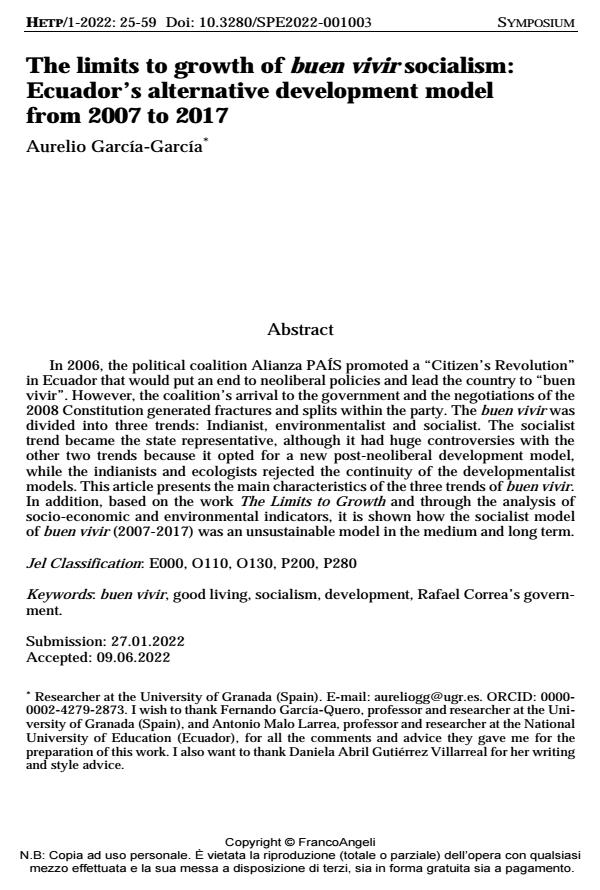The limits to growth of buen vivir socialism: Ecuador’s alternative development model from 2007 to 2017
Titolo Rivista HISTORY OF ECONOMIC THOUGHT AND POLICY
Autori/Curatori Aurelio García-García
Anno di pubblicazione 2022 Fascicolo 2022/1
Lingua Inglese Numero pagine 35 P. 25-59 Dimensione file 252 KB
DOI 10.3280/SPE2022-001003
Il DOI è il codice a barre della proprietà intellettuale: per saperne di più
clicca qui
Qui sotto puoi vedere in anteprima la prima pagina di questo articolo.
Se questo articolo ti interessa, lo puoi acquistare (e scaricare in formato pdf) seguendo le facili indicazioni per acquistare il download credit. Acquista Download Credits per scaricare questo Articolo in formato PDF

FrancoAngeli è membro della Publishers International Linking Association, Inc (PILA)associazione indipendente e non profit per facilitare (attraverso i servizi tecnologici implementati da CrossRef.org) l’accesso degli studiosi ai contenuti digitali nelle pubblicazioni professionali e scientifiche
In 2006, the political coalition Alianza PAÍS promoted a "Citizen’s Revolution" in Ecuador that would put an end to neoliberal policies and lead the country to "buen vivir". However, the coalition’s arrival to the government and the negotiations of the 2008 Constitution generated fractures and splits within the party. The buen vivir was divided into three trends: Indianist, environmentalist and socialist. The socialist trend became the state representative, although it had huge controversies with the other two trends because it opted for a new post-neoliberal development model, while the indianists and ecologists rejected the continuity of the developmentalist models. This article presents the main characteristics of the three trends of buen vivir. In addition, based on the work The Limits to Growth and through the analysis of socio-economic and environmental indicators, it is shown how the socialist model of buen vivir (2007-2017) was an unsustainable model in the medium and long term.
Parole chiave:buen vivir, good living, socialism, development, Rafael Correa’s government.
Jel codes:E000, O110, O130, P200, P280
- Ecosocialism Salvatore Engel-Di Mauro, pp.247 (ISBN:978-3-031-74287-3)
Aurelio García-García, The limits to growth of buen vivir socialism: Ecuador’s alternative development model from 2007 to 2017 in "HISTORY OF ECONOMIC THOUGHT AND POLICY" 1/2022, pp 25-59, DOI: 10.3280/SPE2022-001003